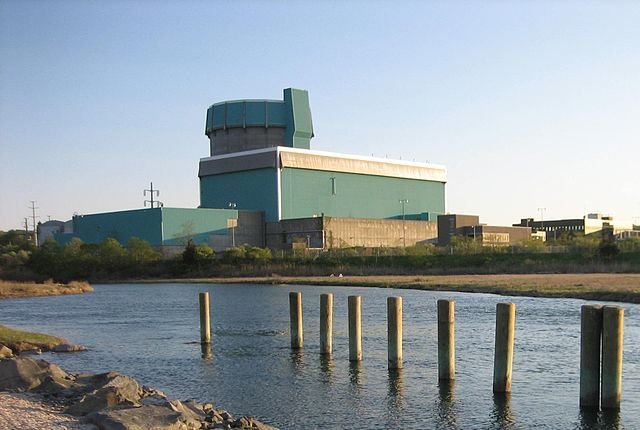Most Long Islanders still think of Shoreham as the place where the Long Island Lighting Company wanted to build a nuclear power plant. They also equate the whole episode to an unmitigated disaster - luckily not the kind they make dramatic miniseries about that show the human toll of a nuclear meltdown.
The drama around our little nuclear power plant that couldn’t spans decades and billions of dollars with Long Island getting nothing to show for it but a debt load we are still paying off. The debate over whether closing the plant was a good thing or not (there are people on both sides of the issue) will continue. Come to think of it, that might make for a good documentary all in itself - are you listening Netflix?
Below we list some history and crazy facts about the Shoreham Nuclear Power Plant.
History
- The idea for the Shoreham Nuclear Power Plant project was hatched in 1966 by the Long Island Lighting Company (LILCo)
- The U.S. Atomic Energy Commission authorized construction in 1970
- The site is on a 60-acre piece of property overlooking the Long Island Sound
- The original cost was estimated to be about $65 million
- LILCo estimated that the plant would be producing power by 1973
- LILCo had ambitious plans to build multiple plants on Long Island-up to 11 in total-including two for Shoreham
- LILCo’s nuclear power plants on Long Island were dubbed a “nuclear park”
- Early on, the capacity for the Shoreham Nuclear Power Plant was increased from 540 to 820 megawatts
- The increase in power output also increased the price to $217 million and pushed the completion of the project to 1975
- By 1979, cost overruns and delays pushed the price tag to $1.5 billion and an opening date of 1981
- Construction on the plant was completed in 1985 and ran at low power for testing purposes
- The final cost is estimated at $5.5 billion
- The plant never generated any power for Long Island
- A feasible safety plan to evacuate Long Island in case of an accident was never approved, leading to the shuttering of the plant
- LILCo’s lackluster and much criticized response to Hurricane Gloria helped to convince people that the power company could not effectively handle a disaster
- The plant was officially closed in 1988
- New York State bought the nuclear plant for $1 in 1992
- The plant was decommissioned in 1994
- It was the first nuclear power plant in the United States to be decommissioned
- 560 irradiated fuel rods and 5 million pounds of nuclear waste were removed from the plant
- A 1994 New York Times report said it took 353 truck shipments to remove the 5 million pounds of radioactive waste produced during testing
- The waste was sent to burial and reprocessing sites in South Carolina and Tennessee
- The report also said the 560 irradiated fuel assemblies were sent by 33 barge shipments from the plant to the Philadelphia Electric Company's power plant in Pennsylvania
Protests
- LILCo’s plans to build a nuclear plant in Lloyd Harbor prompted the initial protests
- Ann and William Carl, Lloyd Harbor residents formed the original opposition to a plant being built in their town
- The Carls formed the Lloyd Harbor Study Group (LHSG) as a conservation organization opposed to nuclear power
- By the time LILCo abandoned their plan for a Lloyd Harbor power plant in 1969, the group inspired anti-nuclear power protests across Long Island
- The movement against the Shoreham Nuclear Power plant reached a new height after the Three Mile Island nuclear reactor accident in 1979
- On June 3, 1979 a massive protest involved more than 15,000 demonstrators where over 600 protesters were arrested, according to a New York Times article
- There was a rainstorm on the say of the rally
- Folk singer Pete Seeger sang for protesters at the rally
- The rally was part of an international protests for that same day called International Antinuclear Day
- Not everyone was against the plant. Stephen Musolino, Ph.D., a health physicist at Brookhaven National Lab (BNL) was quoted in 2009 as saying, “I was happy to live next to the plant.”
- Musolino co-wrote the Shoreham Safety Report and was a pro-nuke scientist
Legacy
- The Long Island Power Act (LIPA) of 1985 was passed to acquire LILCo after the cancellation of the Shoreham Nuclear Power Plant
- In the wake of the Shoreham Nuclear Power Plant failure,LIPA took over LILCO
- Decommissioning of the plant cost around $182 million
- The vacant concrete structure is referred to by LIPA as the “sarcophagus”
- The debt on the plant is still not paid and officials expect the remaining $1 billion to be paid off by 2033
- The site is maintained by PSEG Long Island under contract to LIPA
- PSEG operates a peaking plant on the site that only operates when there is high demand for power
- There is a 2017 video produced by Insider.com that explores the interior of the abandoned plant
- A movie scout posted a blog post with extensive photos of the interior of the plant that you can see here
- There are no visitors allowed
- The former nuclear plant has security surveillance in place
- In 2017, LIPA dedicated two new wind turbines at the site of the Shoreham nuclear power plant
- The turbines are mounted on 100-foot high towers and generate as much as 200,000 kWh of electricity annually
- Ideas for the site also include converting it into a state park
- The plant was featured in the 2012 film The Dictator starring Sacha Baron Cohen
- By law, the site cannot be used for nuclear power










